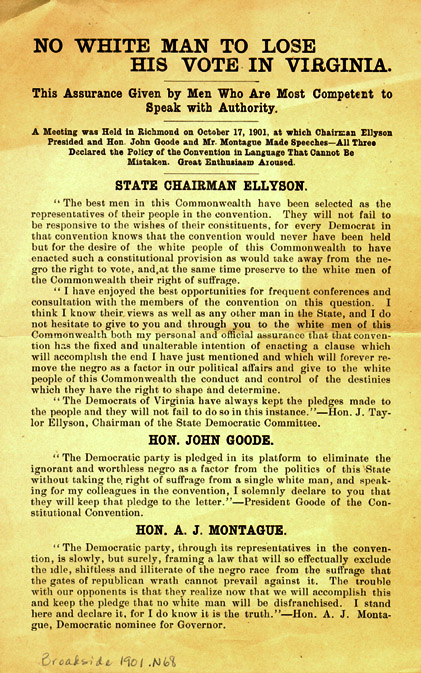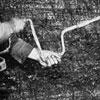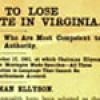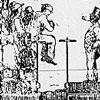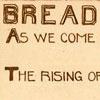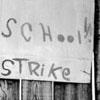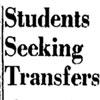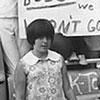Perhaps the most significant barrier to economic opportunity for African American men and women was the systematic discrimination of Jim Crow, which developed in the wake of Reconstruction in the South. The 14th and 15th Amendments were designed to protect the rights of African Americans, but after federal troops left former Confederates returned to power and systematically reversed progress made by African Americans. Jim Crow was more than a system of public segregation – it was a system of racial domination that extended to economic, political, and social conditions that received overt expression in public discourse.
The 1901-1902 convention to write a new state constitution is an example of such discrimination. Democrats such as John Goode, the convention president, fought to restrict African American suffrage by instituting a poll tax. To avoid limiting the voting rights of poor whites, however, they instituted a “grandfather clause” that exempted from the poll tax anyone who was allowed to vote before the Civil War. Goode circulated this broadside, titled “No White Man To Lose His Vote In Virginia,” to reassure white Virginians that their voting rights would remain untouched, and that the party intended only “to eliminate the ignorant and worthless negro as a factor from the politics of this State without taking the right of suffrage from a single white man …”
In addition to denying African Americans the right to vote, Jim Crow included labor systems, such as sharecropping, that limited economic opportunities for African Americans. By the turn of the century, lynching and other forms of violent intimidation kept blacks away from the polls and discouraged resistance to the Jim Crow system. Between 1890 and 1917, more than two black southerners were lynched each week on average.
Source: Taylor Ellyson, John Goode, and A.J. Montague, “No White Man to Lose His Vote,” broadside, 1901, Race & Place, Virginia Center for Digital History, accessed September 20, 2011.


